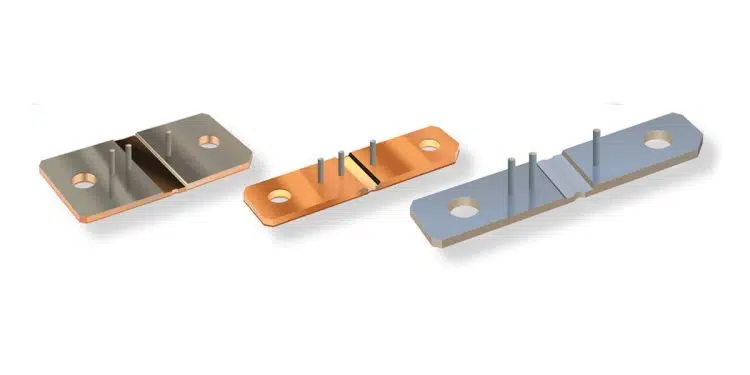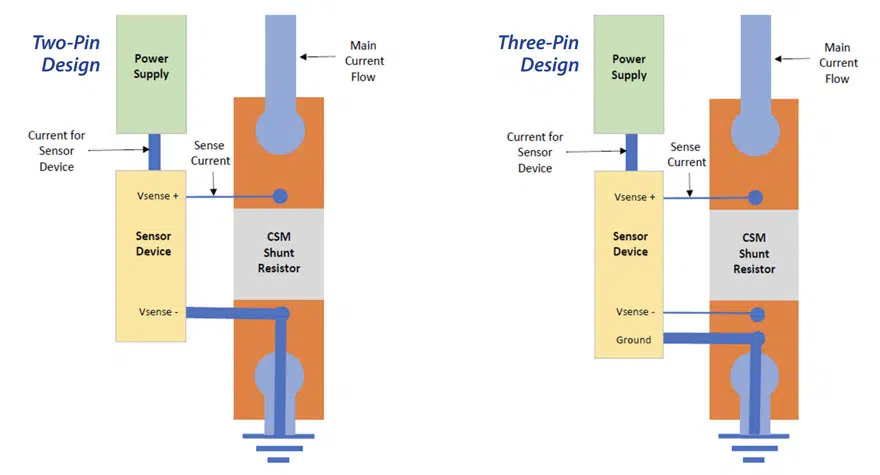Bourns is pleased to announce the extension of the model CSM2F series AEC-Q200 compliant current sense resistor families with additional sensing pins which connect to the customer’s PCB by through-hole soldering. The three-pin current sense resistors designs aims to reduce the sensing error.
Current sense resistors are growing in popularity due to their high measurement accuracy and relatively low cost compared to other technologies. This new product series complements Bourns’ other circuit conditioning components, such as power inductors and rectifier diodes.
These new models come with either two or three tin-plated copper pins. Two pins are riveted to the voltage test points of the shunt resistor in order to measure the voltage drop on the resistive element, which is proportional to the current flow through the resistor.
The optional third pin connects to the ground side of the circuit. For two-pin designs, the current used by the sensor device flows through the ground side pin and causes a voltage drop between the PCB connection and the resistor, which can result in a sensing error. Three-pin designs reduce the sensing error by carrying the ground current on a separate path from the sensing circuit.
Bourns® CSM2F Series Current Sense Resistors are manufactured using electron beam welded resistive and copper alloys. This product family is available with three different surface finishes.
- The “Pre-Plated” copper terminal version is tin-plated before the electron beam welding process. The top and bottom surface of the copper terminals are plated while the side terminals and the resistive element remain non-plated due to the stamping process.
- The “Fully-Plated” version goes through the tin-plating process after material stamping to ensure the resistive element and all side terminals are covered by tin. This process enhances the performance of the Model CSM2F Series with better long-term stability and lower resistance drift.
- The “Bare-Copper” version is without tin-plating and provides better TCR (Temperature Coefficient of Resistance) performance.
The Bourns® Model CSM2F Series is available in four different footprint sizes: 6918, 8518, 7036, and the new 8536 metric. The series features resistance values ranging from as low as 25 µΩ up to 200 µΩ, with permanent power ratings of up to 50 watts, continuous current up to 1414 amps and the ability to handle high pulse power ratings. The metal alloy current sensing element enables thermal EMF as low as 0.25 µV/K and low TCRs of ±50 PPM/°C in the 20 °C to 60 °C temperature range.
Features
- EB welded metal strip
- Passivated bare copper, plated top and bottom surface or fully-plated terminals
- Two sensing pins for voltage sensing
- Optional third sensing pin for ground connection
- Up to 50 W permanent power
- Excellent long-term stability
- Low resistance, low TCR
- Low thermal EMF
- Maximum fastening torque: 10 Nm
- Bulk or tray packaging
- RoHS compliant*
- Automotive AEC-Q200 compliant
Applications
- Battery Management Systems (BMS)
- Current sensing for hybrid and electric vehicles
- Current sensing in bus bars
- Current sensing in welding equipment
- Voltage division
- Power modules
- Frequency converters
- Industrial
































